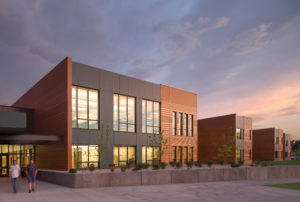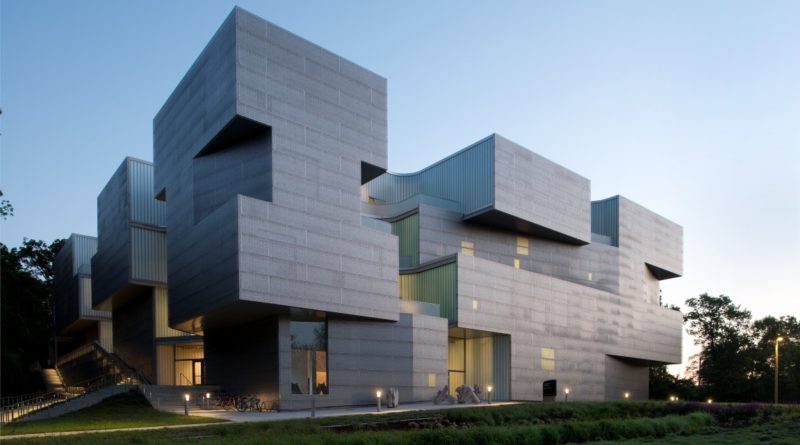MCA Winter Awards Ceremony Recognizes Schools for Excellence in Design
By Rachel Leber
CHICAGO — The Metal Construction Association (MCA) in Chicago recognized eight building projects from across the country for their excellence during the MCA’s Winter Meeting held in San Diego, Jan. 22-24. Included in the eight categories were four school-related awards and recognitions for excellence in design.
Judged by a panel of architects, the MCA Chairman’s Awards include a criteria of overall appearance, significance of metal in the project, innovative use of metal and the role of metal in achieving project objectives. The eight categories included: overall excellence; residential; metal roofing; education — primary and secondary schools; education — colleges and universities; institutional; municipal; and commercial/industrial.

The Iowa City-based University of Iowa’s Visual Arts Building took the prize in the category of “Overall Excellence” — the highest honor given, according to MCA. The Visual Arts Building — designed by architect Steven Holl — has an industrial aesthetic with 38,000 square feet of RHEINZINK-cladding and poured-in-place concrete walls.
The main entrances on the southwestern and southeastern sides of the building are covered in 1.5-millimeter perforated stainless-steel panels. The panels create a rainscreen system as well as bring natural light into the building through a series of scooped setbacks with 13,000 holes in a specific pattern in each of the stainless steel perforated panels. Curved RHEINZINK panels were also used on the building’s vegetative roof to clad large skylights.
In the category of “Primary and Secondary Schools,” the Medicine Crow Middle School in Billings, Mont., won the category for the 121,000-square-foot building, newly constructed for grades six, seven and eight, designed by Seattle-based Integrus Architecture and Billings-based A&E Architects.
The exterior of the school incorporates copper penny and dark bronze metal panels, which mimic the striation patterns in the sandstone that surrounds the school. In addition to creating a unique aesthetic, the metal wall panels are durable, and also meet sustainability and energy goals for the exterior envelope of the building. In addition, the linear metal panels serve to organize the school into classrooms as well as to define the procession to the entry of the building.
In the category of “Colleges and Universities,” the Whitcomb Art Center at Knox College in Galesburg, Ill., took the prize. The environmentally friendly, energy-efficient building was designed with the goal of future LEED certification. A sawtooth metal roof includes skylights that fill the second-floor studio spaces with evenly dispersed natural lighting throughout the year.
The roof systems use conventional construction with metal panels along with other wall areas using reclaimed material. Skylights and large framed openings for glass allow light with shading techniques for energy savings. Using a metal building allowed the design team to create a transition from the east end of the campus to the industrial district in Galesburg, with exposed metal being important to the overall effect, according to Texas-based Lake-Flato Architects Inc., the building’s architect.
Finally, the Mooseheart School in Mooseheart, Ill. — designed by Hestrup and Associates Architects of St. Charles, Ill. — won in the category of “Metal Roofing.” The architect used metal throughout the design to “create unity” among the buildings, with neutral colors chosen for the metal panels that blend with the brick and stone on the structure. In addition to the design aesthetic, metal was chosen for its durability and longevity.
“In this particular case, the roof was integral to the design,” said MCA judge Mark Horton, FAIA, and principal at Mark Horton Architecture in San Francisco. “It wasn’t just a roof — but a roof that was used to express a design.”

